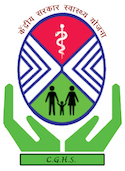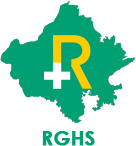This article aims to give an insight into the concept of frozen shoulder as reviewed in Ayurveda.
To begin with, a brief introduction would be helpful. Frozen shoulder is an idiopathic condition characterized by limitation of movement of the joint and subsequent painful episodes. Called ‘ice-pick’ pain. It can occur at any age, but usually affects people between 40 – 60 years old . There are some predisposing factors for this condition such as diabetes mellitus knee arthroses rheumatoid arthritis etc. No exact cause of the conditon is there-
Frozen Shoulder: the pain of shoulder
It occurs more commonly in women than men and the patient may have a history of upper respiratory tract infection or examination shows weakness or stiffness on one side of the body. The patient may also have night pain and difficulty in sleeping. Frozen shoulder is a syndrome consisting of paresis or paralysis, local muscle spasm, atrophy, and chronic pain. This condition has a variable course depending upon its severity and duration. The aim of this article is to review the concept of the frozen shoulder as seen in Ayurveda and also give practical advice on how to treat this condition from an Ayurvedic perspective.
The Story of Frozen Shoulder
Bhuja jataka – the story behind frozen shoulder:
There was once a young Brahmin who lived near Mysore city in South India (now Karnataka). Every day He used to go to Ramanathaswamy temple situated close by where he used to meditate for hours. He was a very virtuous young man and followed all the rituals of his religion meticulously.
Before doing any ritual, he would massage his body with oil as per the Vaidya’s instruction. On one particular day, in preparation for bathing after the worship he applied oil on his shoulder and prayed that God should take away from him any deformity on this part of his body so that he may never have a crooked shoulder.
But soon after applying the oil, tragedy struck when an elephant from nearby forest attacked him and bit his shoulder. This bite caused severe pain, swelling , inflammation and dysfunction (of muscles) on that part of his body which became immobile due to negligence by the doctors at Mysore.
The pain in shoulder….
The Vaidya had advised him to be patient. And assured him that it would take some time for the shoulder to come back to normal. But his condition became worse day by day. His stay in Mysore did not help at all and eventually he lost hope . With a broken heart, he decided to go home . On the way back , He met a saint who told him about an herbal remedy which could cure his frozen shoulder.
The Brahmin took this medicine regularly for 7 days as advised by the saint after which his frozen shoulder started improving with movements. This was due to body’s natural healing process aided by the herbals given by the saint. The rest is history – He devoted himself completely into doing service to the community and took a vow never to touch oil again. He became famous in his kingdom as he helped people with his herbal medicine. The herbals were used for many medicinal purposes including treatment of frozen shoulder.
The synopsis of story…..
He was called Bhuja which means ‘arm’ in Sanskrit language due to his arm problem and Jataka means ‘birth’. Thus, the name Bhuja Jataka came in because he was born with an unnatural crookedness of one arm (6). This story is often told by Ayurvedic doctors during consultation when prescribing herbs for this disease . The Brahmin who had become a saint later on ,was called Sripuranada Saraswati.
As per Ayurveda, He was not only a great religious leader but also a great physician and herbalist. He had studied ‘Rasayana’ a special branch of Ayurveda under one of the greatest physicians during those days – Sage Agnivesha (6). Rasayana means ‘to rejuvinate’ in Sanskrit language and it deals with rejuvenation, longevity, stress management , anti aging etc . It is believed that this branch was originally taught to Sripuranada by Sage Agnivesha himself who went on to become the God of medicine.
Bhuja Jataka explains how trauma can cause frozen shoulder due to unconscious holding and gripping (of muscles) when pain occurs . Immobility or even slight movement of the joint causes excruciating pain which leads to a ‘freezing’ of the joint leading to pain and loss of movement. This story also teaches us that proper lifestyle – in this case, by undertaking daily religious practices is important for maintaining good health.
Bhuja Jataka: Ayurvedic concept:
Ayurveda believes there are two main causes for frozen shoulder: (i) Trauma and (ii) Paschatya dosha .
The trauma
The trauma can be a direct injury inflicted by an animal bite or fall on the shoulder. In such cases, it takes very little time for the problem to develop from mild swelling into full-blown frozen shoulder conditions with progressive immobility of the shoulder joint due to inflammation. As per Ayurveda, trauma leads to swelling and inflammation of tissues which further causes dysfunction (i.e immobility) of shoulder joints due to ‘Vata’ dosha (Ayurvedic concept). Vata is the most common dosha in our body and it governs all movement-related activities including blood circulation, muscle contraction etc. Thus, trauma or injury directly debilitates vata leading to frozen shoulder conditions.
Jataka indicates second cause –
Paschatya dosha (i.e imbalance between doshas) for frozen shoulder . If a person’s system is already under strain due to stress on nerves, brain or other parts of the body like intestines, spleen etc , it creates excess Pitta dosha in his/her system which can lead to frozen shoulder conditions . Another reason for Paschatya dosha is accumulation of toxins in the body due to consumption of improper diet.
Causes behind Frozen Shoulder
Unfortunately, Ayurvedic doctors have no concrete idea about how long it takes for a frozen shoulder disease to develop. It varies from person to person depending upon immunity level and other factors like genetics , lifestyle etc . One thing is sure – combination of both trauma (Exogenous) and internal imbalance ( Endogenous ) are responsible for developing frozen shoulder conditions.
(1) Exogenous causes :
- Accident or fall on shoulder region which leads to inflammation and swelling of tissues around joint;
- Broken bones in shoulder area;
- Direct trauma or injury to shoulder joint due to animal bites, accidents etc ;
- Abcess formation in shoulder area;
(2) Endogenous causes:
- Excessive exertion of shoulder muscles due to excessive lifting, weight training, pushing/pulling activities;
- Muscle spasms due to prolonged use;
- Repetitive movements (like computer work); and
- Adverse lifestyle choices like improper diets , smoking , alcohol consumption etc .
Trauma is the direct cause for frozen shoulder conditions according to Ayurveda which can be confirmed by various scientific research done on this topic (7- 9). Frozen shoulder usually develops over a period of weeks to months after trauma-related inflammation occurs either at the shoulder joint or shoulder region.
Bhuja Jataka: Symptoms
Ayurvedic doctors classify frozen shoulder according to various symptom complexes which are as follows (bom , 2012):
Vata dominated frozen shoulder symptoms :
In this case, patient loses movement of fingers and wrist although it is painful in beginning. Patient complains of numbness rather than pain on applying pressure over the affected joints and it signals onset of frozen shoulder conditions. Gradually all movements of hand become difficult including gripping, grasping etc . Ankles also become stiff with vata-dominated frozen shoulder condition and walking becomes difficult due to decreased mobility of feet.
Mild swelling appears around shoulder joint and pain subsides with rest. With Vata-dominated frozen shoulder conditions, patient suffers from various calcification at different joints, arthritic knee and ankle pains etc .
Pitta dominated frozen shoulder symptoms :
Pitta dominant condition is- severe pain in shoulders which intensifies during the night time. Patient develops skin rashes on affected region due to overheating of body fluids (i.e Pitta). Swelling occurs over both shoulders with redness and burning sensations while walking or performing physical activity. Tissues around shoulder region looks deformed and lumpy due to inflammatory cells deposition.
Pittha dosha: Symptoms . As per Ayurvedic concepts, Pitta can be produced in any dosha which is under-dominant. Pitta can be present in Vata (Vata Pitta) or Kapha (Kapha Pitta). Ayurvedic texts mention different symptoms of vata and Kapha-dominated frozen shoulder conditions associated with pitta imbalance.
What is Ayurvedic Treatment for Frozen Shoulder?
Ayurveda is the best form of medicine for frozen shoulder conditions. Treatment involves following steps:
Home Remedies for Frozen Shoulder
First of all, patients should adopt a healthy lifestyles and food habits to get rid of this disease. Patients must learn how to relax by doing yoga or meditation. Ayurvedic physicians also recommend performing pranayama exercises (breathing techniques) regularly with proper concentration on breathing exercises. This may help in reducing anxiety levels caused due to pain which results in relief from a stiff shoulder conditions. If you cannot do these things then try a warm bath taken after evening meals followed by light massage. Avoid taking hot water baths during the initial stages since they may worsen your condition. Patients can also perform light aerobic exercises like running, cycling, swimming etc to warm up the body and improve blood circulation .
Ayurvedic Medications
Physician will suggest you various herbal treatments as follows: Neem ( Margosa ) is considered best herb for shoulder stiffness. You can take neem capsules or use neem oil externally on affected area. Moreover, you should eat fresh fruits regularly since they contain powerful anti-inflammatory agents which help in reducing inflammation and relieving pain gradually . Other useful herbs include calamus root , bilva fruit , ginger etc.













